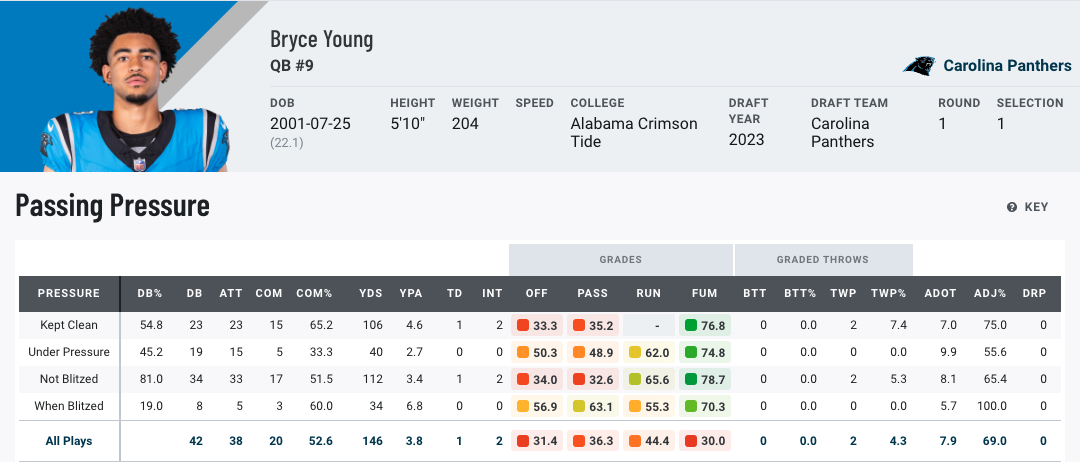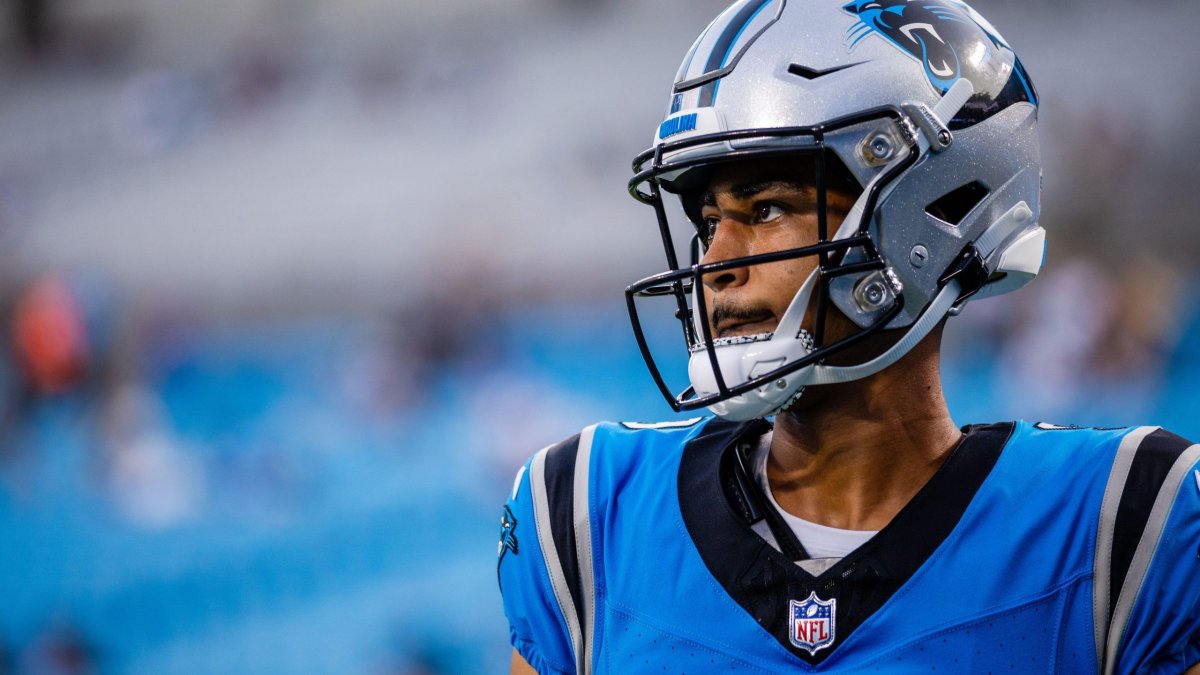• Bryce Young struggles: The numbers were ugly, and so was the PFF grade. Young ended with the worst grade of this trio (31.4), and there was little joy for him in the passing game.
• C.J. Stroud under pressure: Stroud was pressured on more than 45% of his dropbacks, but his pressure resulted in five sacks. Overall, he averaged just 5.5 yards per attempt.
• Dig into the numbers for yourself: PFF's Premium Stats is the most in-depth collection of NFL and NCAA player performance data. Subscribe today to get full access!
Estimated reading time: 4 minutes
Week 1 of the NFL regular season brought the debuts of three rookie quarterbacks — No. 1 overall pick Bryce Young, No. 2 pick C.J. Stroud and No. 4 pick Anthony Richardson.
Long gone is the era when young quarterbacks were expected to bide their time on the bench before they could finally take the field. Now, more than ever, rookies are expected to be ready to rock right out of the gate.
Given the quality of the teams drafting them, the reality of that expectation remains up for debate.
So, how did each player get on in Week 1?
No. 1 overall: Bryce Young, Carolina Panthers
The numbers were ugly, and so was the PFF grade. Young ended with the worst grade of the trio (31.4), and there was little joy to be had for the rookie in the passing game.
The big question is, how much of that was his fault? The Alabama product made two ugly mistakes for his interceptions, which both fell to Falcons safety Jessie Bates III. He clearly didn’t see Bates on one of them, but the second was a great example of young passers adjusting to just what NFL players are capable of — the Panthers QB tried to move Bates with his body position and eyes, but Bates just never bought it, staying on his mark and breaking in front of Young’s pass.

Carolina’s lack of receivers was a problem, and there was little threat to the Falcons defense downfield. Very early on, Atlanta determined they didn’t need to respect a deep threat, making life harder for the young quarterback. He was sacked only twice but was under pressure 45.2% of the time, and he showed a good ability to escape that pressure and not make a bad play worse.
Exclusive content for premium subscribers

WANT TO KEEP READING?
Dominate Fantasy Football & Betting with AI-Powered Data & Tools Trusted By All 32 Teams
Already have a subscription? Log in



 © 2025 PFF - all rights reserved.
© 2025 PFF - all rights reserved.